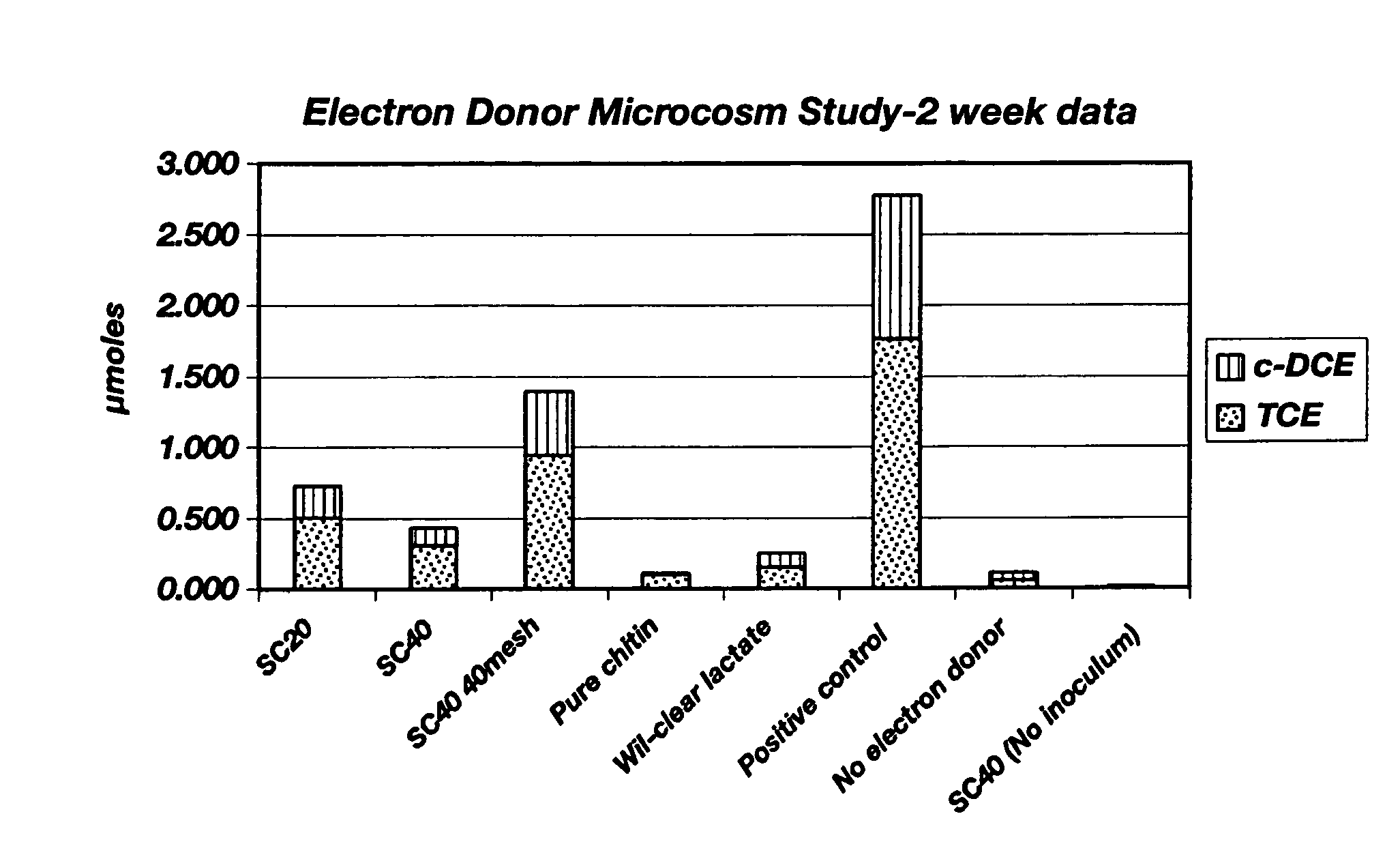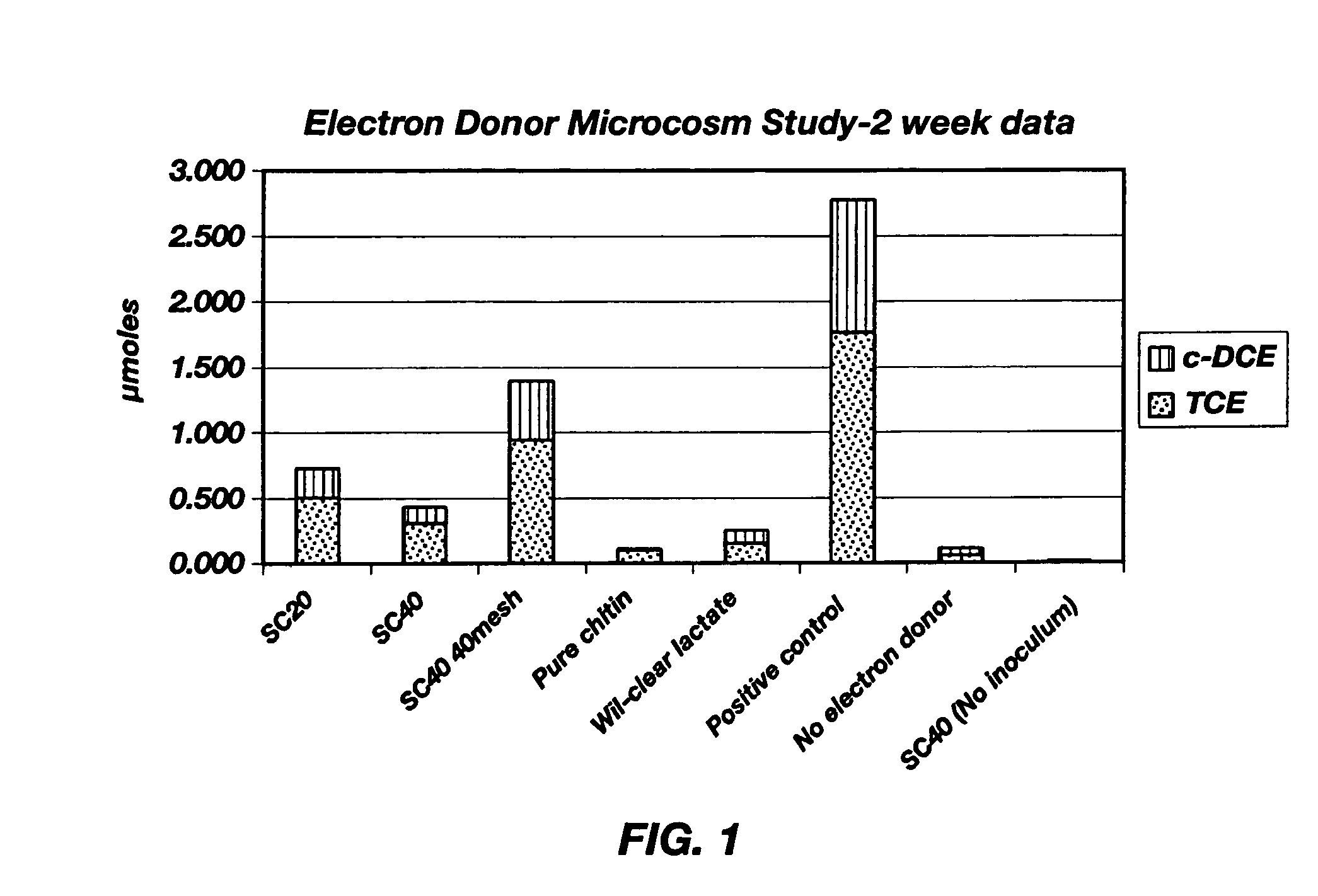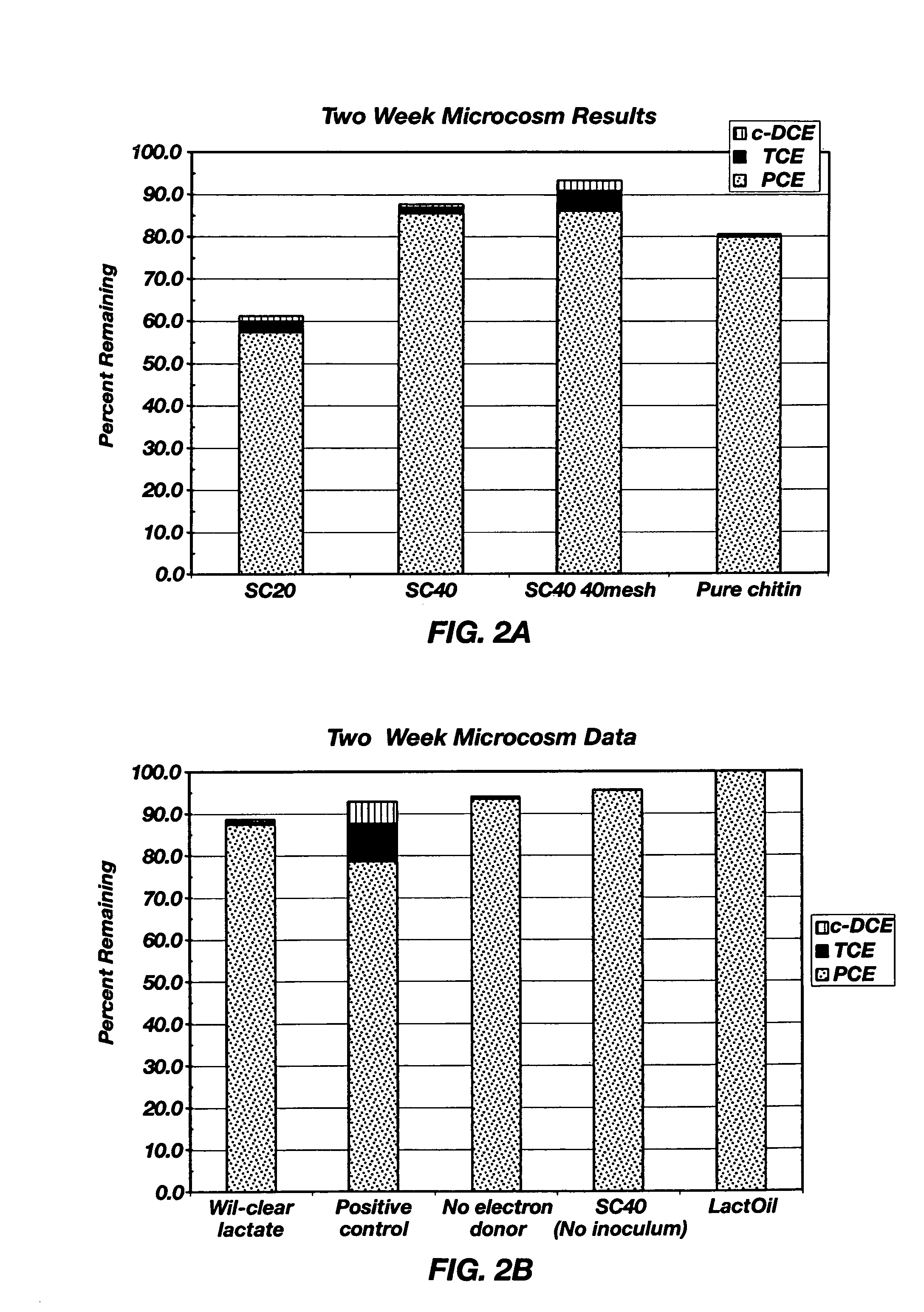Environmental bioremediation using shell as an electron donor
a technology of electron donor and crustacean shell, which is applied in the field of environmental bioremediation using crustacean shell and other chitin-containing products as electron donors, can solve the problems of high cost of chitin in quantities sufficient for use in the field, compound sites often present unique obstacles, and the difficulty of cleaning up such sites
- Summary
- Abstract
- Description
- Claims
- Application Information
AI Technical Summary
Benefits of technology
Problems solved by technology
Method used
Image
Examples
example 1
[0058]This example relates to a chitin-containing complex referred to as ChitoRem™ SC20 (hereinafter, “SC20;” JRW Technologies, Inc., Lenexa, Kans.). The starting material for making SC20 was the crab shells left over after crab meat has been manually removed from crabs. The crab meat was used for human consumption. The crab shells after manual removal of crab meat still contained a significant amount of meat residue that adhered to the crab shells per se. The meat residue principally comprised protein, but also included lipids and other constituents.
[0059]After manual removal of meat from the crab shells, the remaining crab shell material was dried and ground into small pieces. Optionally, the ground crab shells can be screened for size. Screening for size can be carried according to procedures well known in the art, such as passing the dried and ground shell material through a screen having a selected mesh size such that pieces smaller than the openings in the screen pass through,...
example 2
[0061]This example relates to a chitin-containing complex referred to as ChitoRem™ SC40 (hereinafter, “SC40;” JRW Technologies, Inc.). As with the making of SC20 as described in Example 1, the starting material for making SC40 was the crab shells left over after crab meat had been manually removed from crabs. After manual removal of meat from the crab shells, the remaining crab shell material, comprising residual protein, chitin, and minerals, was subjected to a caustic (strong base) wash for removing some, but not all, of the protein adhering to the hard shells. After the caustic wash, the remaining shell material comprising chitin, minerals, and some residual protein was dried and ground into small pieces. Optionally, the ground, caustic-washed crab shells can be screened for size, as described in Example 1. The product resulting after partial removal of protein in a caustic wash, drying, grinding, and, optionally size screening of the crab shells is termed SC40.
[0062]SC40 contain...
example 3
[0063]Chitin-containing materials were evaluated for their efficacy in promoting the complete anaerobic dechlorination of tetrachloroethene (perchloroethylene or PCE) to ethene. As a comparison, pure chitin, which has been previously shown to support chloridogenesis, was also used. Additional products evaluated included Wilclear™ lactate (JRW Technologies, Inc.), LactOil™ lactated ester (JRW Technologies, Inc.), and sodium dipropionate (SDP). Microcosms were used with a mixed inoculum of PCE dechlorinating bacteria and were monitored at two-week intervals over a six-week period. PCE, TCE, and c-DCE were quantified at two, four, and six weeks. At six weeks, vinyl chloride, ethene, and methane concentrations were also measured. To determine the extent of electron donor degradation, the concentration of predominant volatile fatty acids was determined for each type of electron donor used. The pH was also measured at six weeks.
[0064]Microcosms comprised 100 ml of anaerobic culture medium...
PUM
 Login to View More
Login to View More Abstract
Description
Claims
Application Information
 Login to View More
Login to View More - R&D
- Intellectual Property
- Life Sciences
- Materials
- Tech Scout
- Unparalleled Data Quality
- Higher Quality Content
- 60% Fewer Hallucinations
Browse by: Latest US Patents, China's latest patents, Technical Efficacy Thesaurus, Application Domain, Technology Topic, Popular Technical Reports.
© 2025 PatSnap. All rights reserved.Legal|Privacy policy|Modern Slavery Act Transparency Statement|Sitemap|About US| Contact US: help@patsnap.com



